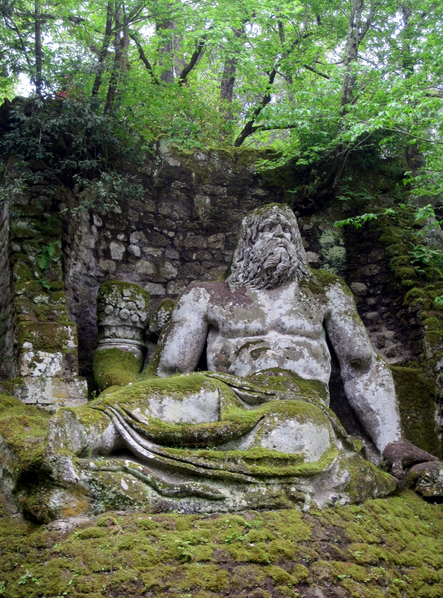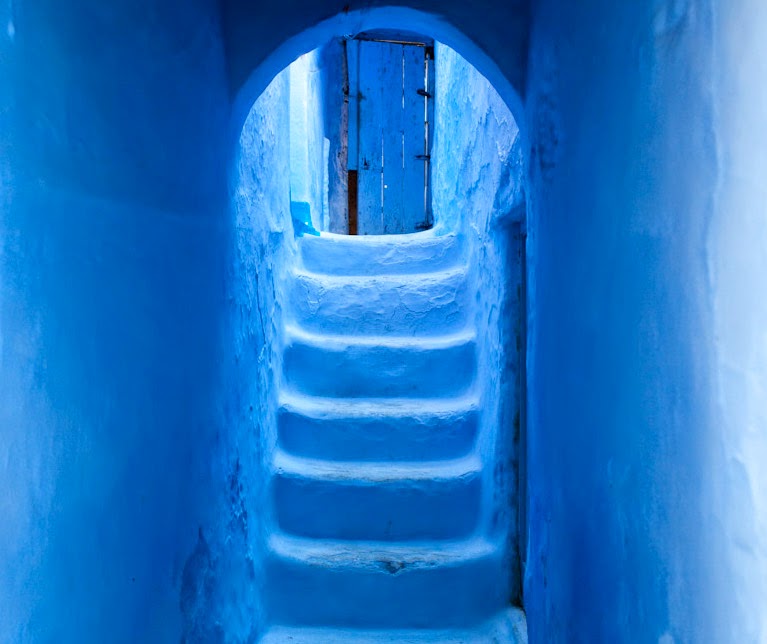From enchanted castles to exotic monasteries, from prestigious cities to magnificent villages, from splendid gardens to spectacular flowered tunnels, our planet offers such a large number of wonders to cause a sort of Stendhal syndrome to the most sensible souls.
Places that truly look like they were borrowed from fairy tales, too good to be true as it were, and definitely worth a visit, at least once in a lifetime.
Today, we’ll try to take you to another world dimension and make you feel like you are living a lucid dream.
Then, if you wish to make the dream come true, you can always think to go there for real.
1) Neuschwanstein Castle, Bavaria – Germany
Let’s start with the fairytale castle par excellence, that of Neuschwanstein which every year is visited from more than 1.3 million people.
Featured in many Disney’s movies, this castle is one of the most famous destinations in the world.
Situated in the south of Germany, in the Bavaria region, Neuschwastein castle with its 965 metres dominates the villages of Füssen and Schwangau. From here, you can enjoy breathtaking views on the Alps, with their villages, mountains and lakes.
The construction of the Neuschwanstein castle begun in 1869, following the desire of King Ludwig II of Bavaria (1845–1886) to have a retreat in an ancient German feudal style. King Ludwig, known as the Fairytale King, was a great patron of the German composer Richard Wagner: in his honour, the interior of the castle were inspired by his operas.

Even the name Neuschwanstein, which literally means “New Swan Castle”, is a clear reference to a Wagner’s character, the Swan Knight.
A visit to the castle is strongly recommended in order to appreciate the building’s special rooms, for example the Throne Hall in Byzantine style, where visitors can admire a gold and ivory throne, albeit incomplete, the Hall of the Singers, which is the largest of the palace, the Dining Room with its series of paintings representing the legendary competition of bards (1207) and the Bedroom, in neo-Gothic style, with its beautiful baldachin bed decorated with oak intaglios made by 14 woodcarvers. The room’s furniture is superb: the curtains, the bed covers as well as the tapestry are all in Bavarian blue, decorated with the swan and lion of Wittelsback, the Bavaria’s coat of arms.
To live a real fairytale vacation, choose a room in Bavaria at the foot of the Neuschwanstein Castle, surrounded by the scenic mountains and lakes of the Alps.
Also, you can seize the chance to play some sports such as ski, horse riding, paragliding in the timeless beauty of this Germany’s region.
If you want to book a tour of the Neuschwanstein castle, the building is open every day, also in winter, except for January 1st and December 24th/25th/31st.
2) Casa Batlló, Barcelona – Spain
Known as one of the most popular icons in the city of Barcelona, Casa Batlló is a must-see!
It’s thanks to the Catalan genius of Antoni Gaudi that this modernisme piece of art, since 2005, is a UNESCO World Heritage Site. This amazing building always fascinates visitors for its radical design, refined architectural details and for the visual solutions used: a real masterpiece of light, colour and shapes.
If you’re planning a visit to this eclectic city to enjoy the cultural side of the Catalonian capital, and why not, also experience the lively Spanish movida, on this page you can find some special offers for Barcelona.

Casa Batlló is situated in the city centre of Barcelona, and it can be reached by bus (H10, V15, 7, 22 and 24), by the metro (Passeig de Gràcia L2, L3 and L4) or by train (Passeig de Gràcia station). The building is open all year round, Monday to Sunday, from 9am to 9pm (last entrance is at 8 pm). For more information about tours, tickets and fees, please visit the official site.
3) Keukenhof Park, Lisse – Holland
Passionate about photography? Get your camera ready, we’ll give you the subject.
If you want to take a memorable picture, you absolutely have to visit one of the Netherlands’ highlights: the famous Keukenhof Park.
This famous garden is situated in South Holland, in the small town of Lisse, south of the city of Haarlem (the most important floricultural area in Holland) and south-west of Amsterdam.
Being cities of the Netherlands, both Haarlem and Lisse are four meters below sea level. The best way to visit the area is by bicycle so to fully grasp the intensity of the local colourful tulip fields, their windmills and dams that give a unique view to all visitors.
Follow our tips if you are looking for the ideal location to visit the Keukenhof Garden.
The Keukenhof Garden, also known as the Garden of Europe, is the second largest park in the world with its seven million flower bulbs, planted by hand, covering an area of 32 hectares.
This famous Garden is open to public during the tulips’ blooming – 20 March 2015 to 17 May 2015, from 8am to 7.30pm – and it is accessible by bus from the train stations of Harlem, Schiphol and Leiden. Entrance tickets to the park are available here.
4) Taktsang Monastery – Bhutan
Known also as Tiger’s Nest, Taktsang Monastery is an impressive Buddhist site situated on the edge of a cliff in Bhutan, at 1,200 metres above sea level.
The temple complex was built in 1692 around the sacred Taktsang Senge Sam dup cave where, according to the legend, the Guru Rinpoche spent three years, three months, three weeks, three days and three hours in meditation. This site is surrounded by a mystical power, where many people find inspiration for meditation.
If you want to reach this monastery, precariously perched on the Himalayan cliff of the upper Paro valley, you must be prepared: from the monastery parking, a 3 hour up-hill hike waits for you! If you are not fit and athletic prepared, hiking up to the sacred site can be very strenuous, so in this case it’s better to rent a horse at about USD $10. However, even if you rent a horse to face this precipitous hill, the horse ride is a one-way trip, so the descend of the mountain must be done by your own foot. Good luck!
5) Park of the Monsters, Viterbo – Italy
The Sacro Bosco, also named Parco dei Mostri (literally Park of the Monsters) is a Renaissance complex located in the city of Viterbo, Italy.
In the 16th century, prince Orsini Bomarzo created a special garden in his properties: a true natural amphitheatre populated by buildings and sculptures, right in the heart of mother nature, representing giant rocky monsters and mythological characters.
If you want to see this unique park with your own eyes, find a flight and a comfortable room to enjoy your visit in Viterbo.
The Sacro Bosco is easy to reach by car (highway A1 – Attigliano exit) or by train, stopping at Viterbo. The park is open all year round, from 8.30am to 7pm from April 1st to October 31st, from 8.30am until the sunset from November 1st to March 31st).

6) Erice, Trapani – Sicily
Erice is a historic walled town perched on top of the homonymous mount (Mount Erice), at about 750 metres above sea level: it majestically overlooks the city of Trapani and offers unlimited views on Sicily and the Mediterranean sea below. On a clear day, people say you can see as far as Tunisia.
Such a defensive location explains why the town was selected as settlement by the island’s numerous occupiers: the Phoenicians, the Greeks, the Carthaginians, the Romans and the Normans.
Greek historian Thucydides says Eryx was founded by Trojan exiles; once settled, they joined the native population originating the ancient people of the Elymians.
The town of Erice has entirely maintained its Medieval character: the streets, the houses and all the buildings are located within a typical triangular perimeter that is supposed to be somehow related with the cult of the Earth Mother.
The massive fortification walls, that are exquisitely preserved especially on the north-west side, dates back to different periods: the lower part goes back even to the Phoenician period. They are well worth a visit along with the Norman Castles, also known as the Venus Castle, since it was erected on the remains of an ancient Roman temple consecrated to the goddess.
Erice is famous also for the little Pepoli Tower, below the main castle, recently turned into an interactive museum.
Stepping inside the walled part of Erice and walking through its narrow streets truly feels like travelling back in time.
Also, if you like visiting medieval churches, Erice, often referred to as the “city of a thousand and one churches”, is the right place to be.
The most spectacular way to get to the town is by taking the cable-car from Trapani: a 10-minute journey that will give you wonderful views over Trapani, the Mediterranean sea and the local islands.
There are also buses running from Trapani to Erice, for which you need to check the timetable in advance.
Drivers can use the car parking just outside the town walls.
You can easily visit Erice in one day or even less, so probably the best option is to book a hotel in Trapani. However, if you wish to experience the unique feeling
of staying in this fairy-tale town after the sunset, there are some nice and affordable places where to sleep, also within the wall fortifications, like Villa Sant’Andrea or 3-star Hotel Moderno, appreciated for its roof terrace and its restaurant.
7) Wisteria Tunnel, Kitakyushu – Japan
From the Bel Paese, let’s move on now to the Far East, to a place in Japan which is around 5 hours driving from Tokyo: it is the city of Kitakyushu, situated in the Fukuoka Prefecture.
Imagine you are a beautiful fairy princess walking through a pastel-coloured tunnel of Wisteria flowers (wisteria is a species of flowering plants) with your beloved prince. Sound amazing, doesn’t it?
From fairy tales to reality: a place like this does exist.
It is the Kawachi Fuji Garden, famous for being home to a spectacular Wisteria 80-metre long passageway where visitors can enjoy an unforgettable stroll down a tunnel which is an authentic explosion of colours.

The best season to visit the garden in Kitakyushu is no doubt spring, from April to May: at the end of April, they also organize a Wisteria festival there.
Last, but not least, Wisteria is an important symbol for Buddhists and Japanese people believe that the souls of their deceased soldiers are reincarnated in these and other flowers.
Here you can browse a selection of hotels in the Fukuoka district, ranging from convenient 2 and 3 star accommodation to more expensive 4-star hotels.
8) Chefchaouen – Morocco
Is blue your favourite colour?
Then, you must visit Chefchaouen, a small picturesque town in the northern-western part of the country, around 100 kilometres from capital Tangier. What makes this remote place so famous throughout the world is the vivid blue hue that covers many buildings in the medina.
According to some people, the blue colour was introduced by the Jewish exiles who thought it best represented the sky and the heaven.

Spending a couple of days in Chefchaouen or Chaouen, as it is locally called, would be enough to enjoy the town’s beauty. On the other side, if you want to visit the mountains nearby (the Rif range) and the surrounding villages, you will need some extra days. Chefchaouen represents a perfect starting point for many tours in the Rif Mountains area.
For sleeping, you can choose one of the hotels in town: some of them also provide a restaurant where you can taste some typical local food.
Visiting Chefchaouen, you will probably notice the influence of Andalusian style in the town’s architecture, for the city was built by Spanish exiles as a fortress to fight the Portuguese invasion of Morocco, back in 1471.
Hope this short guide to some of the most suggestive beauties on our planet can be an inspiration for your future travels.
Please do let us know…


